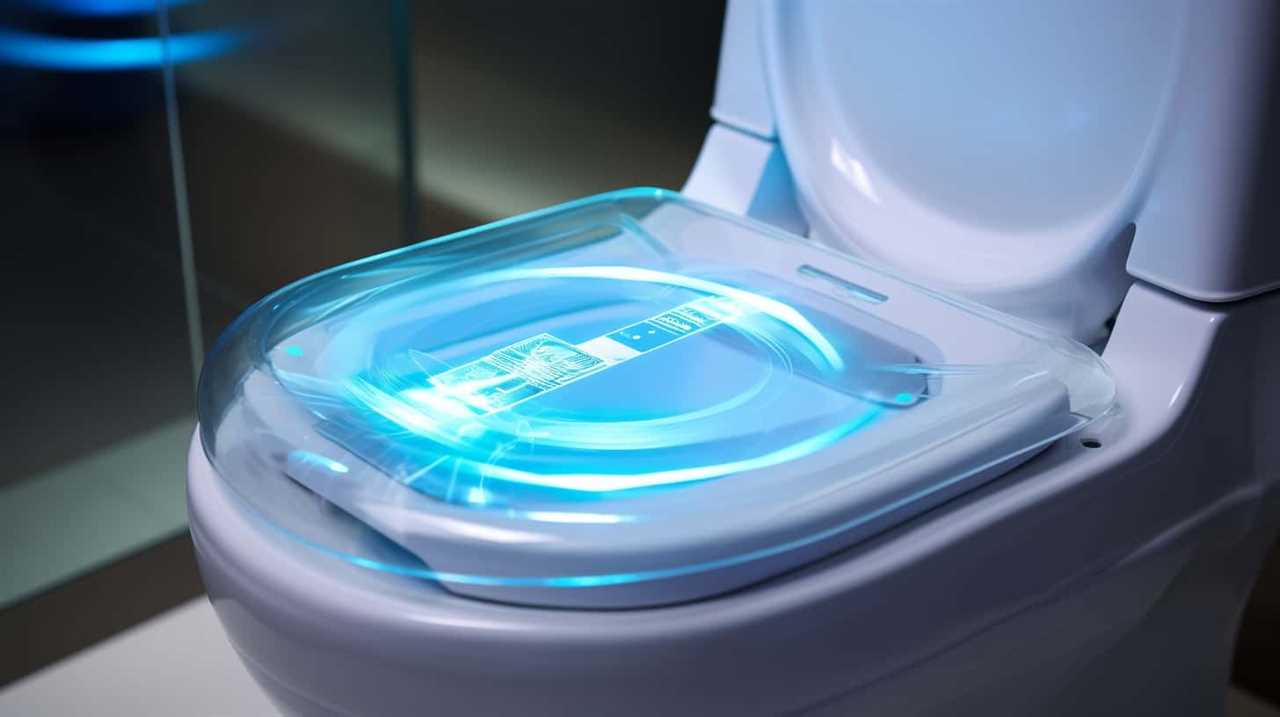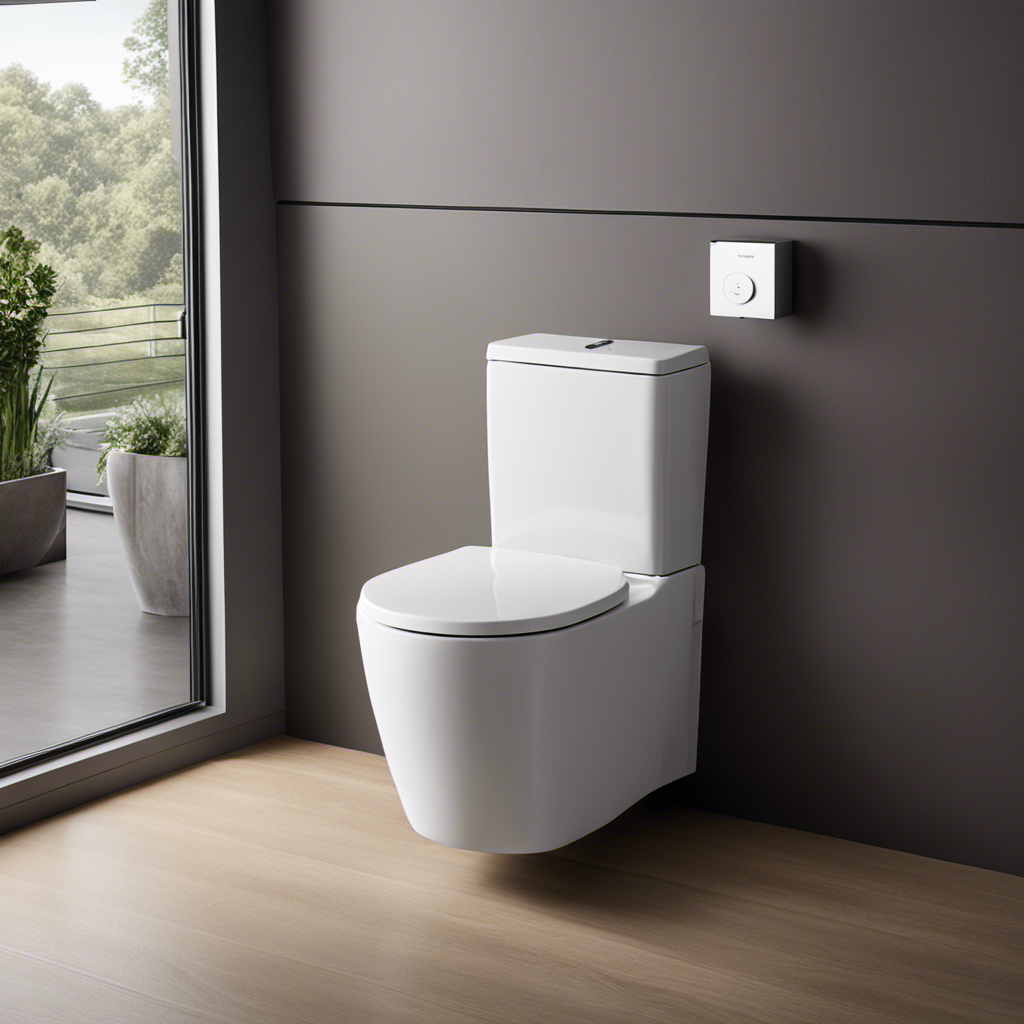Have you ever wondered what happens when we flush a tampon down the toilet?
Well, let us paint you a picture. Imagine a bustling city with intricate plumbing systems working seamlessly. Now, picture the chaos that ensues when a tampon is introduced into this delicate ecosystem.
From environmental impact to potential health hazards, we delve into the consequences of this seemingly innocent act. Join us as we explore the technical intricacies and informative insights of flushing a tampon down the toilet.
Key Takeaways
- Flushing tampons leads to significant water pollution and can contaminate water sources.
- Tampons do not break down easily and can cause clogged pipes, sewage system backups, and costly repairs.
- Sewage treatment plants are not designed to handle tampons, leading to blockages and damage to equipment.
- Improper tampon disposal poses health risks for sanitation workers and the general public.
Environmental Impact
To understand the environmental impact of flushing a tampon down the toilet, it’s important to consider the potential consequences that arise when we dispose of these products improperly.

Flushing tampons down the toilet can lead to significant water pollution and harm the delicate balance of the marine ecosystem. Tampons are made of materials that don’t break down easily, such as cotton and synthetic fibers.
When flushed, they can clog pipes and sewage systems, causing backups and overflows. Moreover, the chemicals and toxins present in tampons can leach into the water, contaminating it and posing a threat to aquatic life.
The pollution from flushed tampons can disrupt the natural habitat of marine organisms, leading to their decline and potential extinction. Therefore, it’s crucial to dispose of tampons properly by wrapping them in toilet paper and throwing them in the trash.
This simple action can help protect our waterways and preserve the health of the marine ecosystem.

Plumbing Issues
Flushing tampons down the toilet can cause a range of plumbing issues, including clogged pipes and sewage system backups. Proper toilet maintenance and disposal methods are essential to prevent these problems. By understanding the potential risks and taking necessary precautions, you can maintain a healthy plumbing system.
Toilet maintenance includes regular inspections and cleaning to ensure optimal functionality. Avoid using the toilet as a trash can and dispose of tampons properly. Flushing tampons down the toilet can lead to clogs and blockages, as they do not break down easily in water. This can result in costly repairs and inconvenience.
To emphasize the importance of proper disposal, consider the following table:
| Issue | Cause |
|---|---|
| Clogged pipes | Flushing non-flushable items like tampons |
| Sewage system backups | Accumulation of tampons in the pipes or septic tank |
Understanding the potential plumbing issues caused by improper tampon disposal highlights the need for responsible waste management. Failure to address these concerns can lead to more severe sewage system problems.

Sewage System Problems
Sewage system problems can arise when tampons are flushed down the toilet, causing blockages and backups. When tampons are flushed, they can accumulate in the sewer pipes and create obstructions. These obstructions can hinder the flow of wastewater and disrupt the normal functioning of the sewage treatment system.
Sewage treatment plants are designed to handle specific types and quantities of waste, and tampons aren’t easily broken down or processed in these facilities. This can lead to clogging and damage to the equipment used for sewage treatment. Wastewater management becomes challenging when tampons are present in the system, as they can cause blockages and backups that may require costly repairs.
As we delve further into the topic, we’ll explore the consequences of these blockages and backups and the potential solutions to address them.
Blockage and Backup
When tampons are flushed down the toilet, they can lead to blockages and backups in the sewage system, causing significant disruptions to the flow of wastewater and potentially damaging the equipment used for sewage treatment.

Toilet clogs are a common consequence of flushing tampons, as they can get caught in the pipes and accumulate with other debris, obstructing the passage of wastewater. This can result in backups, where wastewater is unable to flow freely and may even overflow into homes or public areas.
Aside from the inconvenience and unpleasantness of dealing with these backups, there’s also the risk of wastewater contamination, which can lead to the spread of harmful bacteria and diseases.
Therefore, it’s crucial to dispose of tampons properly in order to prevent these blockages and backups, as well as the potential health hazards they pose.
Potential Health Hazards
We need to be aware of the potential health hazards that arise from flushing tampons down the toilet. Here are five reasons why it’s important to dispose of tampons properly:

- Toxic Shock Syndrome (TSS): Flushing tampons can increase the risk of TSS, a rare but serious bacterial infection. Tampons left in the sewage system can harbor the bacteria that cause TSS, which can enter the bloodstream if the tampon is used again.
- Bacterial Infections: Tampons flushed down the toilet can contaminate water sources, leading to the spread of harmful bacteria. These bacteria can cause infections if they come into contact with open wounds or are ingested through contaminated water.
- Environmental Impact: Flushing tampons contributes to pollution and can harm aquatic life. The chemicals and fibers in tampons can disrupt ecosystems and contaminate waterways.
- Clogging Pipes: Tampons don’t break down easily and can cause blockages in sewage pipes. This can lead to costly repairs and sewage backups.
- Public Health Concerns: Inadequate disposal of tampons can pose health risks for sanitation workers who come into contact with them during sewage treatment processes.
Considering these potential health hazards, it’s crucial to dispose of tampons in the appropriate manner, such as wrapping them in toilet paper and placing them in a designated trash bin.
Frequently Asked Questions
Can Flushing a Tampon Down the Toilet Cause Damage to Marine Life or the Environment?
Flushing a tampon down the toilet can cause significant damage to marine life and the environment. The marine pollution and ecological impact can be severe due to the non-biodegradable materials and chemicals present in tampons.
Will Flushing a Tampon Lead to Clogging or Damage in the Plumbing System of My Home?
Flushing a tampon can pose a clogging risk and potentially cause plumbing damage. It’s important to dispose of them properly to avoid any issues with our home’s plumbing system.
What Are the Potential Problems That Can Occur in the Sewage System if Tampons Are Regularly Flushed Down the Toilet?
Regularly flushing tampons down the toilet can cause potential environmental impact and damage to the sewage system. It is important to follow proper disposal methods to prevent clogging and ensure the system’s functionality.

Can Flushing Tampons Down the Toilet Cause Blockage and Backup in the Sewage System?
Flushing tampons down the toilet can cause blockage and backup in the sewage system. This can lead to potential consequences such as clogged pipes, sewer overflows, and expensive repairs. Proper tampon disposal is essential to prevent these issues.
Are There Any Health Risks Associated With Flushing Tampons Down the Toilet?
Flushing tampons down the toilet can lead to potential health risks. Our bodies are temples, and we must protect them from toxic shock and bacterial infections. Proper disposal is crucial.
Conclusion
Flushing a tampon down the toilet can lead to dire consequences. The environmental impact can be devastating, with tampons adding to the already mounting pollution in our waterways. Plumbing issues and potential sewage system problems may arise, causing blockage and backup.
Moreover, there are potential health hazards associated with improper disposal. To protect our planet, plumbing, and personal well-being, it’s crucial to refrain from flushing tampons and opt for proper disposal methods.

Remember, responsible tampon disposal ensures a cleaner, safer future.










